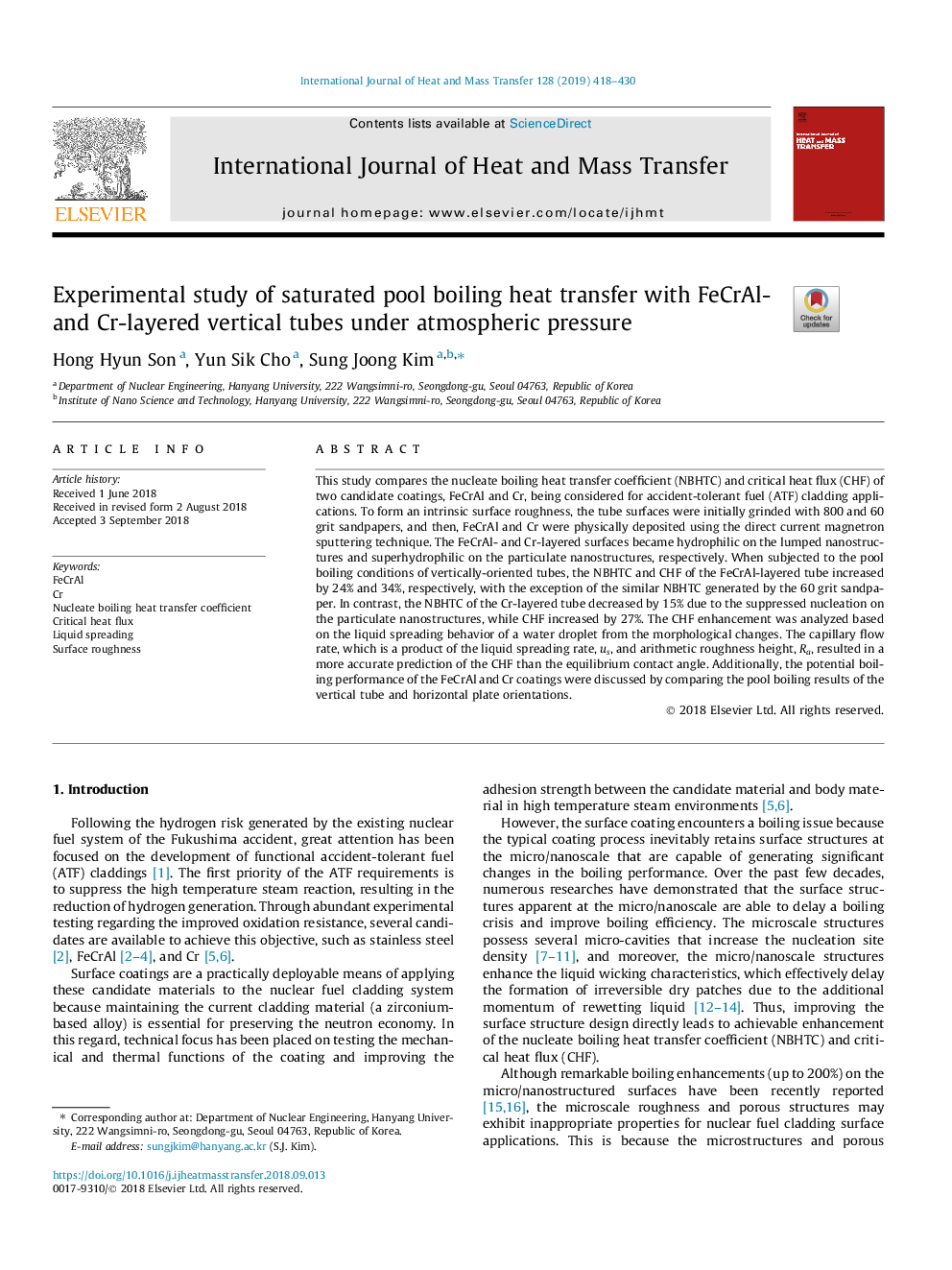| Article ID | Journal | Published Year | Pages | File Type |
|---|---|---|---|---|
| 10139890 | International Journal of Heat and Mass Transfer | 2019 | 13 Pages |
Abstract
This study compares the nucleate boiling heat transfer coefficient (NBHTC) and critical heat flux (CHF) of two candidate coatings, FeCrAl and Cr, being considered for accident-tolerant fuel (ATF) cladding applications. To form an intrinsic surface roughness, the tube surfaces were initially grinded with 800 and 60 grit sandpapers, and then, FeCrAl and Cr were physically deposited using the direct current magnetron sputtering technique. The FeCrAl- and Cr-layered surfaces became hydrophilic on the lumped nanostructures and superhydrophilic on the particulate nanostructures, respectively. When subjected to the pool boiling conditions of vertically-oriented tubes, the NBHTC and CHF of the FeCrAl-layered tube increased by 24% and 34%, respectively, with the exception of the similar NBHTC generated by the 60 grit sandpaper. In contrast, the NBHTC of the Cr-layered tube decreased by 15% due to the suppressed nucleation on the particulate nanostructures, while CHF increased by 27%. The CHF enhancement was analyzed based on the liquid spreading behavior of a water droplet from the morphological changes. The capillary flow rate, which is a product of the liquid spreading rate, us, and arithmetic roughness height, Ra, resulted in a more accurate prediction of the CHF than the equilibrium contact angle. Additionally, the potential boiling performance of the FeCrAl and Cr coatings were discussed by comparing the pool boiling results of the vertical tube and horizontal plate orientations.
Related Topics
Physical Sciences and Engineering
Chemical Engineering
Fluid Flow and Transfer Processes
Authors
Hong Hyun Son, Yun Sik Cho, Sung Joong Kim,
